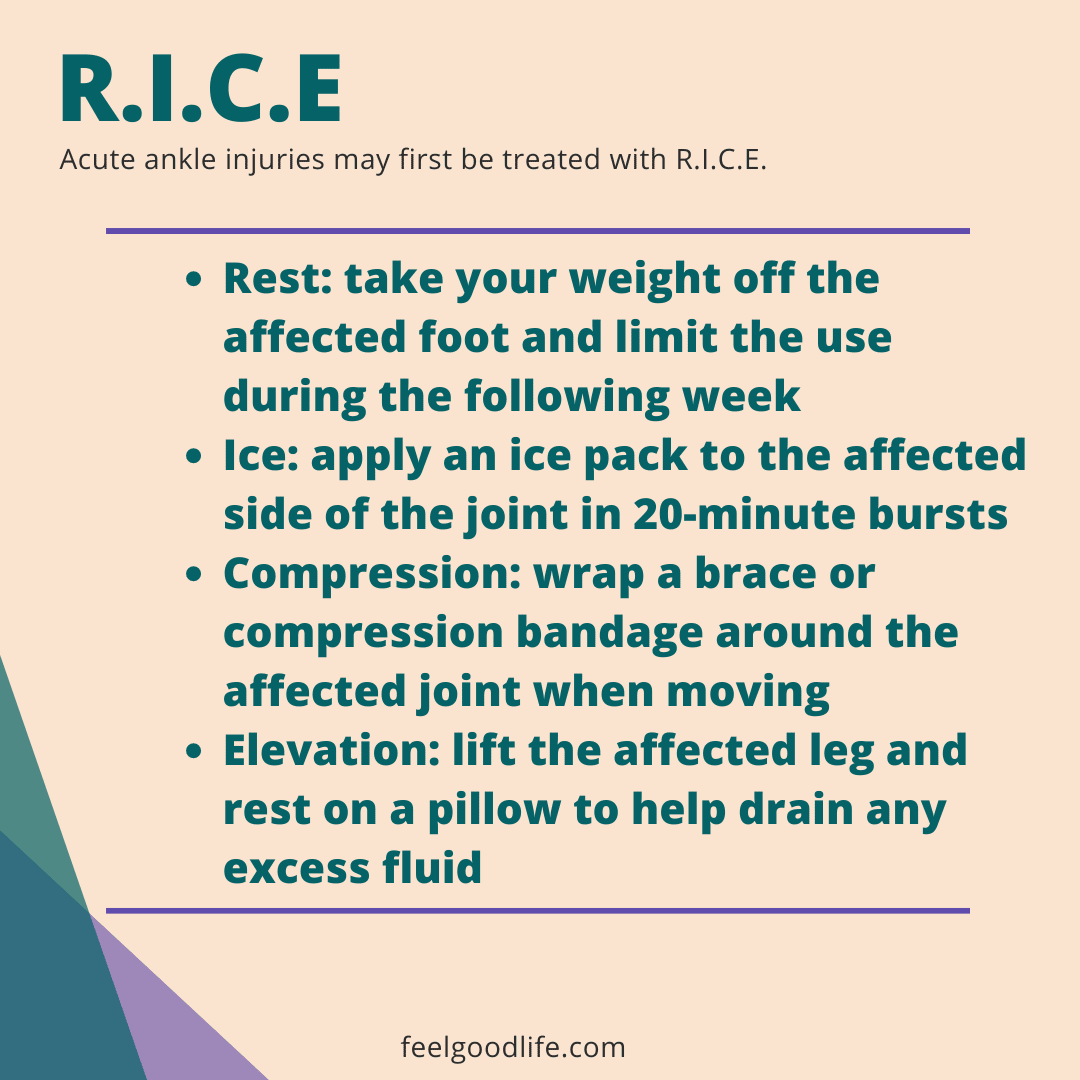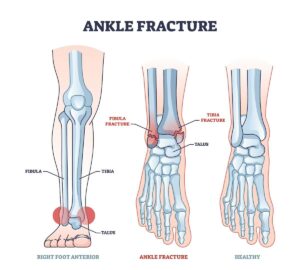Free download: Top 10 Natural & Easy Remedies for Joint Pain from Home. Learn these helpful remedies.
Estimated Reading Time: 6 minutes read
Ankle injuries are more than just inconvenience; if not treated properly, they can lead to severe pain and surgery. That’s why I created this rolled ankle treatment that you can do right from home!
The sudden “pop” during your morning walk… or the tender soreness after moving the wrong way… Rolled ankles are not to be taken lightly.
Many times, when we experience ankle pain, we rest a day or two, throw a brace on, and get on with our day. But it never really resolves the issue. The pain grows, forcing us to rest more… or worse, take a trip to the doctor.
But, what if we could help ease the pain of a rolled ankle without visiting our overworked physicians? With the right isometric exercises implemented into our routine post-injury, we can do just that. Keep reading to learn my recommend rolled ankle treatment!
So What’s the Difference Between an Ankle Strain vs. Sprain?
A rolled ankle, often called a twisted ankle, is an injury that happens when the ankle rolls, twists, or turns in an awkward manner. This can lead to either a sprained or strained ankle.
So, what’s the difference?



Depending on the severity of the sprain or strain, your twisted ankle treatment may be the same!
We’ll cover how to understand your personal severity levels a little later in the article. But first, it’s important to understand your risk levels for rolled ankles… and what can affect the healing time of each.
According to researchers at Sports Health, 14.1% of rolled ankle injuries occurred in 225,114 reported cases in 2010.
Although often untreated, research shows that these injuries can result in a loss of considerable time, since about 25 percent of those who sprain their ankles are unable to attend school or work for at least 1 week.
How Long it Can Take to Heal

Usually mild, low-grade ankle sprains heal within one to three weeks with proper rest and non-surgical care (as we’ll discuss below).
However, it can take between three and four weeks to overcome moderate sprains/strains. And, due to limited blood flow to the ankle ligaments, it may take between three and six months for more severe injuries to heal.
Mild cases may cause plenty of discomforts, but with the right plan of action, you are able to walk and function pretty close to normal.
Special note: take care when you sleep. Lift up your leg so your ankle is taller than your heart. This allows the fluids from damaged tissues to drain back into your circulation, causing the swelling. At night, place a pillow under your foot before you fall asleep.
When to See Your Doctor for a Twisted Ankle

More severe strains and sprains may require surgery to repair damaged or torn ligaments, tendons, or muscles. If you experience any of the following, see a doctor about your injury:
- You Can’t Perform the Below Exercises
- Extreme Difficulty Walking or Standing without Pain
- Complete Inability to Move or the Affected Joint Numbness or Tingling Around the Joint after 2 Days Deformity
- Extreme Difficulty or Pain Bearing Weight
**The final two experiences may mean you have a fracture within your ankle. If so, please see your doctor immediately.**
So what’s the less serious rolled ankle treatment?
Rolled Ankle Treatment at Home
As mentioned earlier, there are many types of rolled ankles. This article, in particular, is focusing on the treatment of acute ankle sprains or strains.
This means the injury occurred rather suddenly after a particular movement. Acute ankle injuries may first be treated with R.I.C.E.

After a week of RICE, it’s time to exercise! Even if your pain has diminished, this next step should not be skipped. Exercising the joint will help prevent the injury from occurring again.
The isometric exercises listed below allow you to strengthen the joint with minimal movement or weight.
Isometrics require you to hold a set position for a period of time in order to strengthen the surrounding connective tissue and muscle. And for this series of non-movement movements, all you need is a ball and a wall!
1. Outer Foot Wall Pushes

Begin next to a wall, sitting upright with the leg farthest to the wall bent and the other straight. Hold a ball between the outside of your straight-legged foot and the wall.

Gently press the outside of your foot into the ball, hold 10 seconds, then relax.
Repeat a total of 3 times.
2. Inner Foot Wall Pushes

Begin next to a wall, sitting upright with the leg closest to the wall bent and the other straight. Hold a ball between the inside of your straight-legged foot and the wall.

Gently press the inside of your foot into the ball, hold 10 seconds, then relax.
Repeat a total of 3 times.
3. Vertical Ball Squeezes with Feet

Begin in a seated position with legs straight out in front. Place a ball between the top of one foot and the bottom of your other foot.

Press into the ball using bottom top foot, resisting the movement with your other foot. Image you are trying to pull your toes up towards your nose.
Hold this hovering position for 10 seconds at a time.
Repeat a total of 3 times.
4. Heel Raises

Stand next to the back of a chair or wall (for support) and gently lift your heels off the ground while keeping your shoelaces square in front of you — don’t let your ankles flare out! Hold this hovering position for 10 seconds at a time.
Repeat a total of 3 times.
Prevention Techniques to Avoid Repeated Injury
While these isometric ankle exercises are great for recovering from sprains or strains, you must still take the following preventative measures to prevent re-injury:
- Warm-up your ankles before exercising, walking long distances, or spending hours on your feet.
- Exercise regularly to strengthen your ankles and legs in the fullest range of motion to increase the joint’s durability.
- Don’t wear your favorite pair of shoes/sneakers longer than a year, as they will wear down and no longer provide sufficient foot support.
Ankle injuries are more than just inconvenient; they can lead to serious pain and surgery if not properly treated.
And treatment goes far beyond just resting the affected ankle. Next time you hear that pop followed by a flood of pain, take the appropriate rest… then follow up with an effective strengthening strategy like the one mentioned above!















